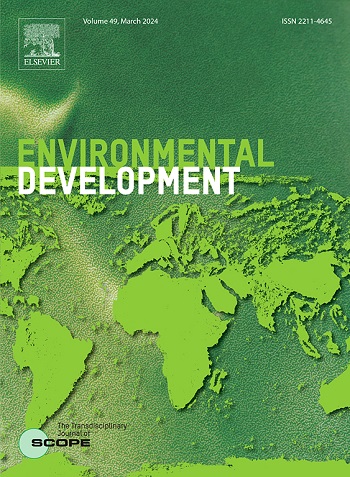气温升高,希望破灭:深入分析气候变化、土地利用模式和全球生物圈保护区干涸之间的相互作用
IF 5.3
2区 环境科学与生态学
Q2 ENVIRONMENTAL SCIENCES
引用次数: 0
摘要
全球生态系统和社区受到气候变化和极端事件的严重影响。大规模湿地对控制水循环、生物多样性、防止洪水和提供基本生态系统服务至关重要,而湿地的迅速干涸是最令人不安的影响之一。曾经是中东最大湖泊的乌尔米耶湖对生态、经济和人类生活产生了重大影响,对气候调节、物种保护、栖息地保护、旅游和娱乐以及其他广泛的生态系统服务做出了贡献。拉姆萨尔公约》将该湖泊列为国际重要湿地,联合国教科文组织将其指定为生物圈保护区。气温升高、水资源管理不当和过度使用、盐度升高和水位下降给生态、农业和社会带来了挑战,使乌尔米耶湖成为环境脆弱性的突出象征。本研究利用大地遥感卫星图像,开始对乌尔米耶湖流域从 1990 年到 2020 年的变化进行全面分析。这项工作旨在通过确定导致其脆弱状况的多种原因,制定有效的保护和恢复战略。研究试图确定降水、气温趋势、农业发展、人口增长、耗水量、蒸散量以及大气中的盐分和气溶胶浓度在湖泊干涸中所起的作用。这项研究全面介绍了气候变化、人类活动和水资源管理之间复杂的相互作用,可能会对湖泊的整体恢复产生影响。研究结果有可能改进预报模型,为乌尔米耶湖以及其他受到全球威胁的湿地提供有针对性的缓解战略。本文章由计算机程序翻译,如有差异,请以英文原文为准。
Rising temperatures and sinking hopes: An in-depth analysis of the interplay between climate change, land use patterns, and the desiccation of a global biosphere reserve
Global ecosystems and communities are significantly impacted by climate change and extreme events. The rapid desiccation of massive wetlands, which are essential for controlling water cycles, and biodiversity, preventing floods, and supplying essential ecosystem services, is one of the most upsetting effects. The once-largest lake in the Middle East, Lake Urmia, had a significant impact on ecology, economy, and human life contributing to climate regulation, species preservation, habitat conservation, tourism and recreation, and a wide range of other ecosystem services. The Ramsar Convention classified the lake as a Wetland of International Importance, and UNESCO designated it as a Biosphere Reserve. The ecological, agricultural, and societal challenges caused by rising temperatures, improper water resource management and overuse, enhanced salinity, and declining water levels have made Lake Urmia an acute symbol of environmental vulnerability. Using Landsat imagery, this study begins a thorough analysis of changes in the Lake Urmia basin from 1990 to 2020. The endeavor aims to develop effective conservation and restoration strategies by identifying the multiple reasons that led to its vulnerable situation. The study attempts to identify the role of precipitation, temperature trends, agricultural development, population growth, water consumption, evapotranspiration, and atmospheric salt and aerosol concentrations in the desiccation of the lake. This study presents a comprehensive knowledge of the complex interplay between climate change, human activity, and water management and may have implications for the holistic recovery of the lake. The findings have the potential to improve prognostic models and inform targeted mitigation strategies for not only Lake Urmia but also for other globally threatened wetlands.
求助全文
通过发布文献求助,成功后即可免费获取论文全文。
去求助
来源期刊

Environmental Development
Social Sciences-Geography, Planning and Development
CiteScore
8.40
自引率
1.90%
发文量
62
审稿时长
74 days
期刊介绍:
Environmental Development provides a future oriented, pro-active, authoritative source of information and learning for researchers, postgraduate students, policymakers, and managers, and bridges the gap between fundamental research and the application in management and policy practices. It stimulates the exchange and coupling of traditional scientific knowledge on the environment, with the experiential knowledge among decision makers and other stakeholders and also connects natural sciences and social and behavioral sciences. Environmental Development includes and promotes scientific work from the non-western world, and also strengthens the collaboration between the developed and developing world. Further it links environmental research to broader issues of economic and social-cultural developments, and is intended to shorten the delays between research and publication, while ensuring thorough peer review. Environmental Development also creates a forum for transnational communication, discussion and global action.
Environmental Development is open to a broad range of disciplines and authors. The journal welcomes, in particular, contributions from a younger generation of researchers, and papers expanding the frontiers of environmental sciences, pointing at new directions and innovative answers.
All submissions to Environmental Development are reviewed using the general criteria of quality, originality, precision, importance of topic and insights, clarity of exposition, which are in keeping with the journal''s aims and scope.
 求助内容:
求助内容: 应助结果提醒方式:
应助结果提醒方式:


